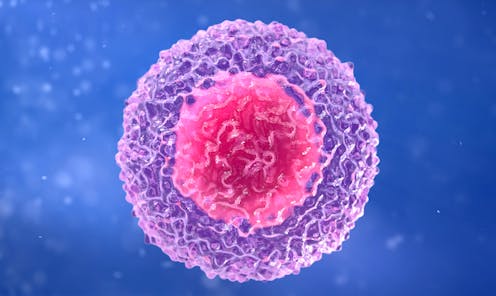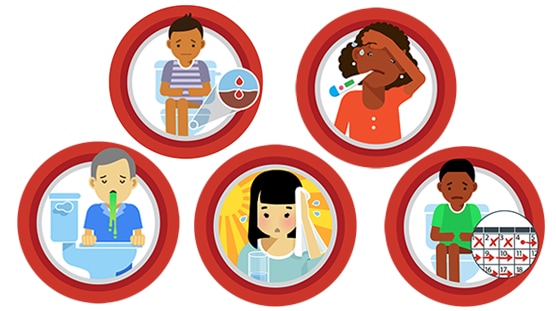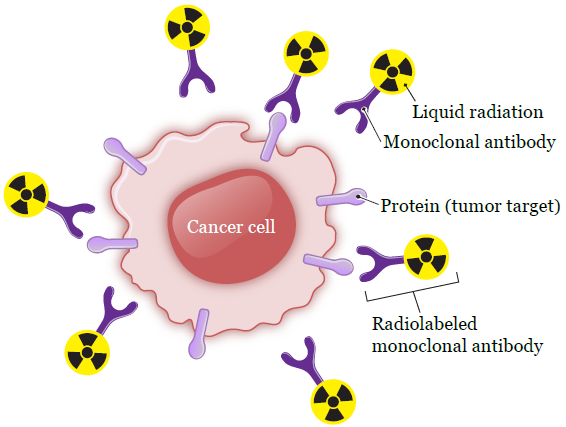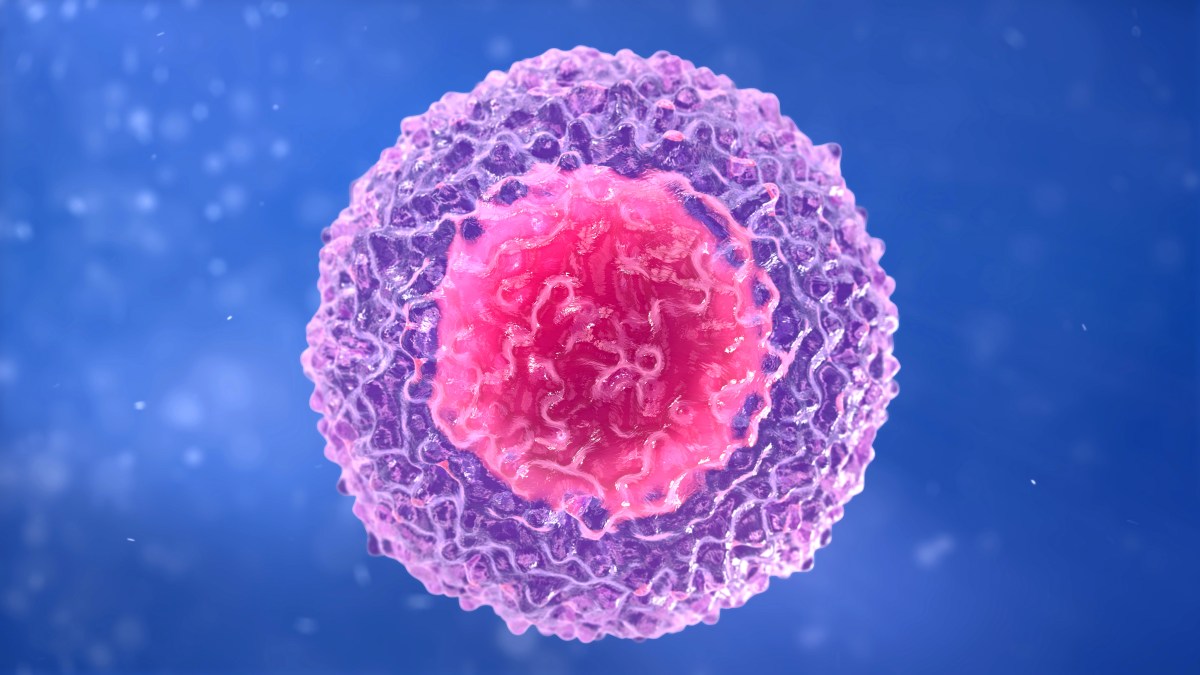Table of Contents
Non-Hodgkin’s lymphoma is a cancer that rises in the cells of the lymphatic system, especially in T lymphocytes (T cells) or b-lymphocytes (B –cells). Therefore, Non-Hodgkin’s lymphoma can be divided in two main groups: T-cell lymphomas or B -cell lymphomas. The incidence of each type varies according to geographic area. The B-cell lymphomas account for 75% of cases of non-Hodgkin’s lymphoma in Western countries; T-cell lymphomas, in the other hand, are more common in Eastern Asia countries.

B-cell non-Hodgkin lymphomas include many subtypes:
- Burkitt lymphoma
- follicular lymphoma
- immunoblastic large cell lymphoma
- precursor B-lymphoblastic lymphoma
- mantle cell lymphoma
- diffuse large B-cell lymphoma
- Chronic lymphocytic leukemia/small lymphocytic lymphoma (CLL/SLL)
Common subtypes of T-cell non-Hodgkin lymphomas include:
- mycosis fungoides
- anaplastic large cell lymphoma
- Precursor T-lymphoblastic lymphoma.
The lymphatic system comprises a network of lymphatic vessels (also called ducts) that ensure the circulation and cleansing of the lymph from bacteria, microscopic waste, and unwanted cells including cancer cells. The lymphatic system also includes all organs where there are large quantities of white blood cells: the lymph nodes, bone marrow, spleen, thymus, and the mucosa-associated lymphoid tissues which include the digestive tract, lungs, skin, etc. the main role of the lymphatic system is to protect the body against certain microorganisms, tissues and foreign bodies, infections and various pathogenic attacks.
Non-Hodgkin’s lymphoma Incidence
Lymphomas are malignant tumors developed from one of the cellular elements constituting the lymphoid tissue. They are groups into two groups: non-Hodgkin’s lymphoma and Hodgkin’s lymphoma. Non-Hodgkin’s lymphoma represents approximately 85% of lymphomas.
Each year, non-Hodgkin’s lymphoma affects around 10 people per million worldwide. According to the National Cancer Institute (NCI), it is estimated that 65,980 men and women were diagnosed with lymphoma in the United States in 2009; about 19,500 people died of the disease.
The incidence of lymphoma (non-Hodgkin’s lymphoma and Hodgkin’s lymphoma combined) varies with age. From 2002-2006, the median age at diagnosis for lymphoma was 64 years of age; the percentages and ages of people diagnosed were approximately:
- 0% under age 20;
- 5% between 20 and 34;
- 4% between 35 and 44;
- 7% between 45 and 54;
- 8% between 55 and 64;
- 4% between 65 and 74;
- 4% between 75 and 84;
- 8% 85+ years of age.
Non-Hodgkin’s Lymphoma Causes
Lymphocytes are a group of white blood cells (leukocytes) that are produced in the bone marrow. They are present in the blood, lymph, connective tissue and lymphoid organs such as lymph nodes, spleen, tonsils, adenoids and Peyer’s patches. The lymphocytes play a major role in immune responses: humoral immunity response, associated with the production of antibodies; and cellular immunity, associated with proliferation of effector cells – a specific group of cells in the immune system that response to stimulus.
In healthy people, there are 4,500-10,000 white blood cells per microliter (mcL). The number varies depending on age and certain medications. For instance, the number increases in case of infections or inflammation. However, despite the increase of blood cells in a healthy person, lymphocytes represent 20 to 40% of white blood cells. Normally, the number of lymphocytes permilliliter (ml) must be:
- less than 4000 in adults
- less than 7 000 in children
- less than 9 000 in an infant.
All these white cells go through a predictable life cycle – they naturally die (when they become too old) to be replaced by new ones. In the case of Non-Hodgkin’s lymphoma, white blood cells can multiply excessively and, without going through this natural death; this condition causes formation of cancer cells.
Non-Hodgkin’s Lymphoma Risk Factors
The causes leading to the development of Non-Hodgkin’s lymphoma are not well known; however factors are suspected.
- AID / HIV– those with AIDS / HIV are at high risk of having lymphoma. In addition, people who have weakened immune system due to certain conditions such as malnutrition and Immunosuppression are at risk.
- Age– non-Hodgkin’s lymphoma is more common among people in their 60s or older.
- Genetic– genetic factors may predispose you to have non-Hodgkin’s lymphoma; the risk is even higher if you live in a carcinogenic environment.
- Infection– certain viral and bacterial infections are suspected in the development of non-Hodgkin’s lymphoma:
- helicobacter pylori
- hepatitis C virus
- Epstein-Barr virus
- HTLV-1 (Human T lymphoma / leukemia virus)
- Herpes virus – HHV 6 and HHV 8.
Some immunosuppressive diseases:
- lupus
- sarcoidosis
- scleroderma
- Celiac Disease
- Hashimoto’s thyroiditis
- rheumatoid arthritis
- Sjogren’s
Non-Hodgkin Lymphoma Symptoms
Generally, early in the evolution of non-Hodgkin lymphoma, it is characterized by a painless enlargement of lymph nodes. These swollen lymph nodes sometimes regress spontaneously to reappear later.
Most common symptoms of non-Hodgkin lymphoma tend to appear in the organs containing lymphoid tissue: neck, armpit or groin areas. As the disease progresses, however, it can reach all parts of the body. This makes non-Hodgkin lymphoma a multi symptomatic disease. In addition to swollen lymph nodes, non-Hodgkin’s lymphoma can cause the following conditions:

- fever
- fatigue
- anemia
- nightime sweat
- itchy skin
- weight loss
- increased risk of infection
- abdominal pain or swelling
- Chest pain often associated with coughing or trouble breathing.
Non-Hodgkin’s Lymphoma Complications
Cancer cells can spread to other organs – especially the digestive tract, chest, lungs or skin – and cause severe complications. The nature and severity of the complications depend on the location of the lymphoma.
For example, a lymphoma in the chest can cause facial swelling or accumulation of fluid in the lungs (pleural effusion); a lymphoma in the stomach or small intestine can lead to constipation or severe abdominal pain; if the cancer is localized in the groin, it can lead to swollen legs; if the lymphoma is located in the skin, it can cause thickening and dark discoloration of the skin.
Non-Hodgkin’s Lymphoma Diagnosis
Signs and symptoms are not sufficient to confirm you have non-Hodgkin lymphoma. Other more specific procedures will be performed to confirm the diagnosis; your doctor will recommend the following tests:
- Physical examination– your physician will exam your body looking for signs indicating non-Hodgkin lymphoma: swollen lymph nodes in the neck, armpit or groin areas. In addition, he will ask you questions about your medical history.
- Blood test– a blood test is needed to confirm or rule out other infections that can cause swollen lymph nodes, HIV / AIDS for example. The blood test is also important to count your blood cells.
- Bone marrowBiopsy – Bone marrow is often affected in the case of non-Hodgkin lymphoma. Laboratory analysis of a sample of your bone marrow is necessary to determine not only the lymphoma but also its stage.
- Lymph node biopsy– this is an important test to determine the morphology (low grade, intermediate grade or high grade) of the lymph nodes; during the test, your physician will take a sample of lymph node tissue directly from the swollen lymph nodes. The technique not only allows your doctor to detect the lymphoma but also its type: non-Hodgkin’s lymphoma or Hodgkin’s lymphoma.
- Scan the thorax and abdomen– usually, your doctor will recommend a scan of your thorax and abdomen to detect and stage the cancer. Along with a positron emission tomography (PET) scan, your physician can also use this imaging technique to determine the size of the tumor.
- Magnetic resonance imaging (MRI)– a MRI of your brain and spinal cord helps your physician to know if the cancer has spread or not to these organs.
Non-Hodgkin’s Lymphoma Stages
Once the cancer is detected in your body, your doctor will perform other medical exams or base on the previous test to determine its stage. The following are stages used in clinical evaluation of non-Hodgkin lymphoma:
- Stage I– at this stage, the cancer has affected a single lymph node or one organ outside the lymph nodes.
- Stage II– at stage 2, the cancer has spread into two or more lymph nodes located in the same side of the diaphragm.
- Stage III– the cancer has spread into the lymph node groups on both sides of the diaphragm; the lymphoma may also spread into the spleen and/or an organ near the affected lymph nodes.
- Stage IV– at stage 4, the cancer has invaded other organs outside the lymphatic system: liver, lung, bone, or bone.
- Recurrent– the cancer has returned after treatment; in general, recurrent lymphoma (non-Hodgkin’s lymphoma or Hodgkin’s lymphoma) is more difficult to be treated.
Non-Hodgkin’s Lymphoma Treatment
Non-Hodgkin lymphoma treatment depends on the type of cancer you have, its stage, your health and your age. If only one lymph node is affected by the tumor, you can definitely be cured by radiotherapy. In advanced non-Hodgkin’s lymphoma, survival chance decreased considerably. In general, non-Hodgkin’s lymphoma treatment includes radiotherapy, chemotherapy, biotherapy, and other therapeutic methods such as stem cell transplantation.
Radiotherapy (Radiation therapy)
Radiotherapy consists of using high doses of X-rays to kill cancer cells in order to eliminate or shrink the tumor. If the cancer is too advanced to be completely destroyed, radiation therapy can reduce symptoms and prolong your life. In the case of a non-aggressive non-Hodgkin lymphoma, radiotherapy combined with chemotherapy can lead to a complete cure in about 50% of cases.
Chemotherapy
Chemotherapy is the use of anticancer drugs to kill cancer cells and prevent metastases. Chemotherapy is often used to treat advanced non-Hodgkin lymphoma. Sometimes, the cancer does not response to the chemotherapy; if so, your oncologist will intensify the chemotherapy drugs to increase your survival chances. In general, a combination of chemotherapy and radiation therapy is used to treat voluminous lymphomas or to reduce pain or bleeding caused by the tumor.
Stem cell transplant
High dose of chemotherapy always leads to damage in the bone marrow. To repair this damage, your oncologist can perform or recommend a stem cell transplantation. The stem cell transplantation is performed to replace damaged blood cells by healthy stem cells, instead of waiting for your body to produce them. Usually, healthy stem cells are taken from you or a compatible donor before the treatment and then frozen to be injected in your body after the chemotherapy. In patients under 55 years, the bone marrow can give very satisfactory results.
Biotherapy (immunotherapy)
Also called immunotherapy, biotherapy is to use substances to stimulate the natural defense (immune system) of your body so it can attack and destroy the cancer cells. One of the biotherapy drugs approved by the Food and Drug Administration (FDA) for the treatment of B cell non-Hodgkin’s lymphoma is Rituximab (Rituxan); it often is associated with radioimmunotherapy. The most common side effects of Rituximab include:
- headache
- nausea
- facial flushing
Radioimmunotherapy

Radioimmunotherapy is a therapeutic method consists of injecting in your body a radioactive antibody that has the property to bind selectively to tumor cells. This therapy is performed to irradiate small tumors scattered throughout your body. Two radioimmunotherapy drugs currently approved by the Food and Drug Administration (FDA) in the treatment of non-Hodgkin’s lymphoma are ibritumomab (Zevalin) and tositumomab (Bexxar).
Common side effects of those drugs include:
- nausea
- vomiting
- diarrhea
- constipation
- headache
- stomach upset
- dizziness
- Flu-like symptoms: cough, chills, muscle aches.



